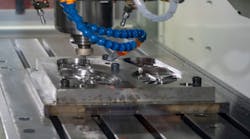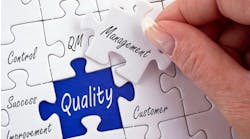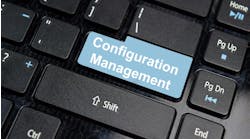Tooling Digitalization 101: From data visibility to supply chain excellence
By Jun Lee, eMoldino senior analyst
Tooling assets (molds, dies, etc.) are the baseline of manufacturing, shaping the products that serve as the face of product-based global manufacturers. The level of management over the tooling assets and the manufacturing processes they take part in greatly influence core business objectives relating to cost and quality control. Thus, it is imperative for global OEMs to establish a high integrity system in which accessing and managing crucial data from tooling assets are possible.
As end-products became more sophisticated, the number of parts and the level of their complexity also increased. OEMs’ tooling fleet continues to grow, with the global tooling market expected to have reached $200.8 billion in 2018 and forecasted to amount to $368.5 billion by 2026.
Despite the growing size and importance of tooling assets, age-old methods are still prevalent. Most manufacturers continue to use manual data management when it comes to tooling assets. Plant managers send in excel spreadsheets once every few months with no unified format, and this outdated and rudimentary form of data holds little strategic value. It is also prone to human error and tampering, further reducing integrity and usability of tooling-related data.
Global OEMs’ lack of data visibility over their tooling assets has been plaguing industry stakeholders, manifesting in forms of premature asset retirement, production inefficiency, quality failure, counterfeit activities, late parts delivery, and more. The added supply chain disruptions from the pandemic and the tariff wars highlighted these inefficiencies in organizations over the last few years.
What is “Tooling Digitalization”?
Tooling digitalization came about to address the market needs for a better state of data visibility over tooling assets. It aims to incorporate tooling-related data collection and management processes into a fully automated digital system. IoT-monitoring devices are often installed on tooling assets in production sites, feeding real-time tooling data directly into the central information system. The accumulated data is then processed into various reports through the software platform’s algorithm, presenting a comprehensive view of all things tooling related for the upper management.
While the scope and accuracy of the data captured vary from one solution to another, it is important to note that the more data there is, the more business insight and meaningful analytics the solution can provide. An OEM equipped with accurate reports of critical process parameters—think cycle time, shot count, temperature, pressure, and location of tooling assets—can make better-informed decisions compared to those who only have unreliable cycle time reports that get updated twice a year.
Coupled with the advanced capabilities of machine learning and AI technologies, a well-executed tooling-digitalization project enables OEMs to establish optimal business practices in terms of asset management, strategic sourcing, and risk mitigation.
Business implications for global manufacturers
Based on my conversations with our clients' organization managers and first-hand experience of dealing with the solution, the business implications of implementing a tooling-digitalization solution can be narrowed down to the following:
l Asset management
With full transparency on mold performance and process patterns, OEM managers were able to ascertain production capacities throughout their supply chain. And by performing optimal resource management and production scheduling, the need for excessive CAPEX in the form of extra mold and dies was reduced. Also, predictive analysis on mold lifespan allowed OEMs to move on from corrective maintenance to predictive maintenance, driving down recurring maintenance costs.
l Strategic sourcing
The newfound ability of OEMs to benchmark supplier performance grants them strategic sourcing opportunities. Ranking and comparing supplier-plant KPIs such as cycle-time compliance, unplanned downtime, and scrap rate has become the new standard process in sourcing crucial parts. Additional cost reduction is anticipated as the solutions’ machine-learning algorithms help establish production best practices further down the line.
l Risk mitigation
Manufacturers, especially in the beauty & cosmetics industry, found success in deterring counterfeit production involving their own tooling assets by tracking uptime and location. Also, enhanced visibility into process-parameter deviation reinforced the precision of quality assurance in organizations. OEM managers are further looking into mitigating late-parts delivery risk with reports on parts-delivery projection.
Already, manufacturing giants like Samsung Electronics and HP are heavily investing in digitalizing their tooling fleet, as they leverage the new capabilities to accomplish supply chain excellence.



